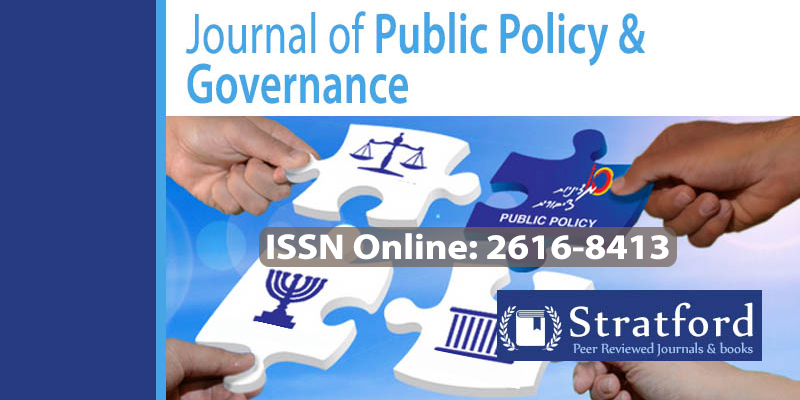Transparency and Policy Implementation in the Public Sector in Singapore
DOI:
https://doi.org/10.53819/81018102t5223Abstract
Transparency is a crucial element in the successful implementation of policies within the public sector. It ensures accountability and fosters trust between the government and the citizens it serves. By providing clear and accessible information about policy decisions, objectives, and outcomes, transparency allows for greater public participation and input. It also enables the evaluation of policy effectiveness and the identification of areas for improvement. Ultimately, a transparent approach to policy implementation in the public sector enhances governance and promotes a more inclusive and responsive government. The Singapore has implemented various transparency measures in its public sector. The Freedom of Information Act (FOIA) allows citizens to access government-held information, promoting accountability and trust. The government's proactive release of information on policies, budgets, and public services enhances transparency and public participation. Singapore's government employs evidence-based decision-making to drive policy implementation. The study adopted the descriptive research design. The target population was 110 Governments’ parastatals in Singapore. The study did sampling of 90 respondents that were chosen from the target population of 110 Governments’ parastatals in Singapore. Questionnaires were used to gather the data. The study concluded that stakeholder engagement during policy formulation ensures diverse perspectives are considered, leading to more inclusive and legitimate policy outcomes. Public awareness and understanding of policies are vital for meaningful citizen participation. The study recommended that to further improve transparency, the Singaporean government should focus on enhancing information accessibility to the public. Efforts should also be made to simplify complex policy language to enhance public understanding. The Singaporean government should prioritize efforts to streamline interagency coordination and clarify roles and responsibilities during policy implementation. There should also be implementation of comprehensive communication and public education strategies to enhance public awareness and understanding of policies.
Keywords: Transparency, Policy Implementation, Public Sector, Singapore
References
Abdou, A. M. (2021). Good governance and COVID‐19: The digital bureaucracy to response the pandemic (Singapore as a model). Journal of Public Affairs, 21(4), e2656. https://doi.org/10.1002/pa.2656
Cahlikova, T., & Mabillard, V. (2020). Open data and transparency: Opportunities and challenges in the Swiss context. Public Performance & Management Review, 43(3), 662-686. https://doi.org/10.1080/15309576.2019.1657914
Davidovitz, M., & Cohen, N. (2023). “I have learned my lesson”: How clients' trust betrayals shape the future ways in which street‐level bureaucrats cope with their clients. Public Administration, 101(1), 335-351. https://doi.org/10.1111/padm.12769
De Laat, P. B. (2018). Algorithmic decision-making based on machine learning from big data: can transparency restore accountability?. Philosophy & technology, 31(4), 525-541. https://doi.org/10.1007/s13347-017-0293-z
Fontaine, G., Carrasco, C., & Rodrigues, C. (2022). How transparency enhances public accountability: The case of environmental governance in Chile. The Extractive Industries and Society, 9, 101040. https://doi.org/10.1016/j.exis.2021.101040
Gore, L. L. (2019). The Communist Party-dominated governance model of China: Legitimacy, accountability, and meritocracy. Polity, 51(1), 161-194. https://doi.org/10.1086/700615
Janning, F., Khlif, W., & Ingley, C. (2020). The Illusion of Transparency in Corporate Governance: Does Transparency Help Or Hinder True Ethical Conduct?. Springer Nature. https://doi.org/10.1007/978-3-030-35780-1
Li, J. Y., Sun, R., Tao, W., & Lee, Y. (2021). Employee coping with organizational change in the face of a pandemic: The role of transparent internal communication. Public Relations Review, 47(1), 101984. https://doi.org/10.1016/j.pubrev.2020.101984
Lopez, L., & Fontaine, G. (2019). How transparency improves public accountability: The extractive industries transparency initiative in Mexico. The Extractive Industries and Society, 6(4), 1156-1167. https://doi.org/10.1016/j.exis.2019.09.008
May, P. J., & Winter, S. C. (2009). Politicians, managers, and street-level bureaucrats: Influences on policy implementation. Journal of Public Administration Research and Theory, 19(3), 453-476. https://doi.org/10.1093/jopart/mum030
Najid, N. A., Mohd Noor, R., Yaacob, N. A., Zulkifli, N., Rahim, A., & Fathiyah, A. (2020). Anti-Corruption initiatives: Experience of several Southeast Asia countries. Gading Journal for Social Sciences, 23(2), 9-24.
Petkovic, J., Riddle, A., Akl, E. A., Khabsa, J., Lytvyn, L., Atwere, P., ... & Tugwell, P. (2020). Protocol for the development of guidance for stakeholder engagement in health and healthcare guideline development and implementation. Systematic reviews, 9(1), 1-11. https://doi.org/10.1186/s13643-020-1272-5
Rasheed, A. R., & Jothimuni, M. S. (2021). Fighting Corruption in the Public Sector by Implementation of Effective Internal Audit Function. The International Journal of Business & Management, 9(6). https://doi.org/10.24940/theijbm/2021/v9/i6/BM2106-054
Sabani, A. (2021). Investigating the influence of transparency on the adoption of e-Government in Indonesia. Journal of Science and Technology Policy Management, 12(2), 236-255. https://doi.org/10.1108/JSTPM-03-2020-0046
Smart, A. (2018). The unbearable discretion of street-level bureaucrats: corruption and collusion in Hong Kong. Current Anthropology, 59(S18), S37-S47. https://doi.org/10.1086/695694
Sofyani, H., Pratolo, S., & Saleh, Z. (2022). Do accountability and transparency promote community trust? Evidence from village government in Indonesia. Journal of Accounting & Organizational Change, 18(3), 397-418. https://doi.org/10.1108/JAOC-06-2020-0070
Sofyani, H., Riyadh, H. A., & Fahlevi, H. (2020). Improving service quality, accountability and transparency of local government: The intervening role of information technology governance. Cogent Business & Management, 7(1), 1735690. https://doi.org/10.1080/23311975.2020.1735690
Supriati, A., & Pangalila, T. (2019). Transparency policy implementation process Manado city government.
Tang, T., Hou, J., Fay, D. L., & Annis, C. (2021). Revisit the drivers and barriers to e-governance in the mobile age: A case study on the adoption of city management mobile apps for smart urban governance. Journal of Urban Affairs, 43(4), 563-585. https://doi.org/10.1080/07352166.2019.1572455
Tay, Z., Whitton, C., van Dam, R. M., Chia, K. S., Swinburn, B., Vandevijvere, S., & Rebello, S. A. (2021). Identifying implementation gaps and priorities for the Singapore government to improve food environment policies: perspectives from a local expert panel. Public Health Nutrition, 24(4), 585-592. https://doi.org/10.1017/S1368980020003468
Vandevijvere, S., Barquera, S., Caceres, G., Corvalan, C., Karupaiah, T., Kroker‐Lobos, M. F., ... & Swinburn, B. (2019). An 11‐country study to benchmark the implementation of recommended nutrition policies by national governments using the Healthy Food Environment Policy Index, 2015‐2018. Obesity Reviews, 20, 57-66. https://doi.org/10.1111/obr.12819
Wang, Z. (2021). Judicial Transparency in China: Principal-Agent Problem and Firm Characteristics (Doctoral dissertation, Duke University).


